November 1 2025: Some Quiet by JMB

November 1 2025: Willem Dafoe for 10th Anniversary Issue of Mia Le Journal by JMB

October 6 2025: FINE LINES at Daphne Art
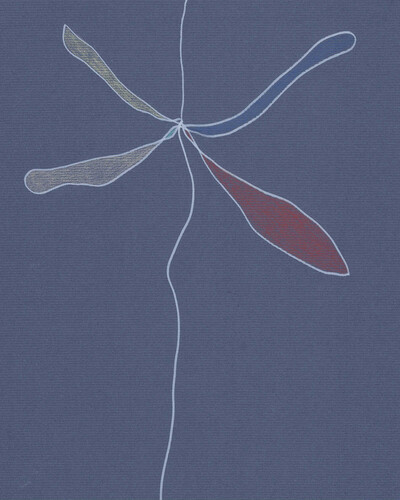
July 1 2025: Cinema du Look: Framing The Loveless by JMB

June 1 2025: White Hollow Box: oddBOX with Drawings by JMB
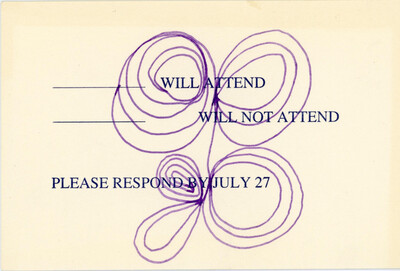
November 23 2024: Matt Dillon by JMB for Mia Le Journal

October 31 2024: Wardrobe Shots, The Loveless
Curated by Beatrice Bonino and Sophia Crema
Via Carlo Michele Buscalioni 4, Turin
October 30-November 3, 2024
In 1980, young photographer Jeannette Montgomery Barron was invited by her brother Monty to serve as stills photographer on the set of "The Loveless," co-directed by Kathryn Bigelow and starring Willem Dafoe, Marianne Kanter, Robert Gordon, and Tina L.
While the crew stayed in an eerie Holiday Inn lost somewhere in Atlanta, the film was crafted with limited resources and a sense of artisanal authenticity. Notably, most of the actors were street cast and had never appeared in a film before.
Commissioned to capture wardrobe tests, Jeannette instinctively crafted portraits that blurred the lines between reality and performance, vulnerability and fiction. The scenes dance between almost stolen portraits, clothing adjustments, and shiny leather jackets, hinting directly at the raw, immediate process of filmmaking. Particularly striking are the three images portraying a still man on the bed. Is he drunk? Or is he dead? Is he performing or merely resting? While these shots evoke a sense of harshness, the presence of human elements around the motionless man breaks through the fiction, imbuing the series with a soft ambiguity.
These early images of Jeannette, long tucked away in her Connecticut home, mark the beginnings of a profound portrait-making practice. This was a precursor to her later work in New York, where Swiss gallerist Bruno Bischofberger commissioned her to shoot the downtown scene of the 80s, capturing figures like Jean-Michel Basquiat, Andy Warhol, Mike Bidlo, Alex Katz, and Cindy Sherman. Her intense photographic portraits reveal the intersection between artists and icons.
Now resurfacing, these never-before-seen photographs from the set of "The Loveless" illuminate the tipping point between the artist's shyness and the creation of iconic imagery behind her camera. They capture the genesis of a cultural moment that defined an era to come, revealing the shy artist's evolution into a confident portrait maker.
--Gilles Khoury

September 24 2024: Works by Martin Bedin and Jeannette Montgomery Barron in collection of National Ceramics Museum of Sèvres
August 23 2024: JMB's My Mother's Clothes at Peggy Mercury

May 25 2024: JMB featured in Mia Le Journal

May 1 2024: Kim Gordon by JMB on cover of RE-EDITION SS24
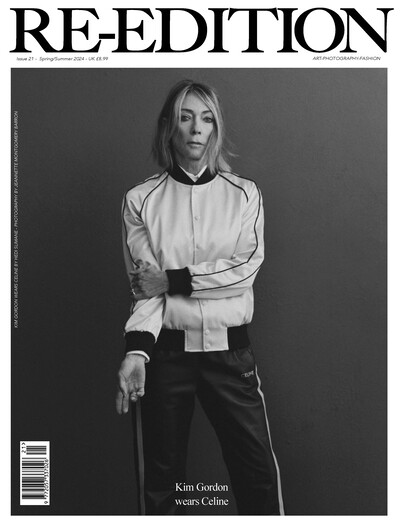
October 7 2023: 1stDibs: Photographer to Know: Jeannette Montgomery Barron
In 1978, Jeannette Montgomery Barron moved, with camera in tow, from Atlanta to New York and immersed herself in the city’s thriving, gritty downtown art scene. Drawn to the avant-garde disrupters of the time, she turned her lens on those around her. By the early 1980s, she was well on her way to producing an indispensable chronicle of the era’s artists, art dealers, writers, performers, intellectuals and scenesters, shot up close and personal in what would become her trademark minimalist black-and-white style.

September 15 2023: The Eye of Photography: NJG : Jeannette Montgomery Barron : JMB
In December 1984, Jeannette Montgomery Barron was invited by Bruno Bischofberger to photograph Jean-Michel Basquiat at his Great Jones Street studio, New York City. This was to be the first of two sittings. With only a birdcage, a chair, together with an unfinished painting as props, Jeannette shot three rolls of 120 film, 36 images – layering light and shadows in her signature black and white. As Francesco Clemente describes “Jeannette Montgomery Barron is an elegant woman and an elegant photographer. She conveys the widest range of expressivity with the minimum amount of means. The secret of her good luck is that she travels light”. Jeannette would later return to photograph both Basquiat and Warhol – again shooting 36 frames, during their infamous painting collaboration at The Factory, in the spring of 1985.

August 26 2023: Peter Fetterman Gallery: The Power of Photography: #1067 - JEANNETTE MONTGOMERY BARRON
Jeannette Montgomery Barron's book "JMB", published by NJG Studio, is an incredible publication filled with expressive portraits of Jean-Michel Basquiat. She was invited to photograph Basquiat in December 1984 by Bruno Bischofberger. Barron traveled light to the shoot, which allowed her to bring an intimacy to the portraits, she shot 3 rolls of 120 film during the session.
Later in the Spring of 1985, she was invited by Bruno again to photograph Basquiat and Warhol together at The Factory. Barron took the same approach as she did when photographing Basquiat the first time, taking the same exact number of frames, 36 exposures. She is a true minimalist.
Barron's minimalist style allowed her to seize Basquiat in an authentic environment. Through this book, she offers a peek into Basquiat's enigmatic aura and artistic brilliance, as well as accentuating her own creative mastery.

July 26 2023: Financial Times: Three photographic visions of New York: Basquiat and Warhol’s touching friendship
In December 1984, photographer Jeannette Montgomery Barron travelled to Jean-Michel Basquiat’s studio on Great Jones Street, carrying only her camera, a light and three rolls of film. Her set-up was simple: a plain wall, some of his paintings, the shadow cast by a birdcage he kept in his studio. One sitting led to another, this time at The Factory with his friend Andy Warhol. Both sittings, from 1984 and 1985, are brought together for the first time in a new book, alongside an essay by Italian artist Francesco Clemente. In contrast to the myriad posed and highly stylised photographs of the pair, Barron’s naturalistic images capture a more subtle dynamic: a shared sense of melancholy, a gentle and tender friendship. The secret to her success, writes Clemente, was that she didn’t treat her subjects like celebrity artists but rather “as poets, emerging timidly from darkness to the realness and fragility of body and soul”.

June 29 2023: Style: Ritratti di un artista

June 20 2023: One Art Nation: 5 Questions with Jeannette Montgomery Barron on Her Most Recent Book, JMB
1AN: I love that you’ve included every single frame, which, by the way, were taken almost 40 years ago! Why have you waited so long to publish them and why now?
JMB: I've been going through my archives for the past few years and decided I've kept all of this work to myself for way too long. The book that Nick Groarke and I published previous to JMB was a book of portraits I took of Cindy Sherman in 1985. Again, every single frame I took of Cindy was included in the book. I have a vast archive and we will continue making these books together. My photographs of Keith Haring will be an upcoming book--again all of the photographs were taken in one sitting.
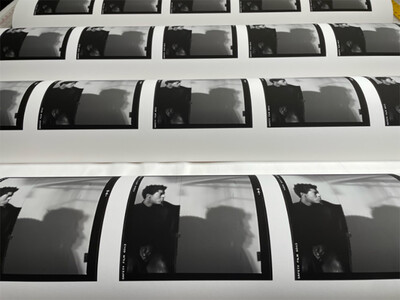
June 17 2023: WWD World: JMB

May 10 2023: 10 Magazine Australia: JMB by Jeannette Montgomery Barron
In December 1894, the American photographer’s deft eye led to an invitation from Bruno Bischofberger to visit his Great Jones Street studio in New York City where she would photograph the late and great Basquiat. There, with only a birdcage, a chair and an unfinished painting as props, she captured the burgeoning artist in what would be his first sitting. Barron shot three rolls of 120 film, capturing 36 sentimental, grayscale images. Tinkering with light, shadows and dreamlike elegance, the artist himself became the artwork. That following spring, Barron returned to photograph Basquiat and Warhol in tandem, capturing 36 further portraits during the pair’s infamous painting collaboration at The Factory in 1985.

May 9 2023: 10 Magazine: Jean-Michel Basquiat’s Enduring Allure Comes to Life in New Photography Book, ‘JMB’
Encased in a teal blue hardback cover with ebony de-bossed ‘JMB’ foiled titles, Jeanette Montgomery Barron’s new, limited-edition coffee table tome brings together a series of her most remarkable portraits portraying Jean-Michel Basquiat alongside Andy Warhol in 1984 and ’85. Unfurling across 64 pages of pure, visual bliss, it’s an intimate perception of the wunderkind and the master immortalised in black and white, entitled JMB (a playful interpretation of both Basquiat and Barron’s initials).

May 3 2023: Show Studio: The Continuing Allure of Jean Michel-Basquiat
'To dismiss Basquiat when alive and celebrate him dead are aspects of the same necessity to disarm his language. Order and power fear only one thing: the banality of greatness. Basquiat gave us a glimpse of greatness. Jeanette, unafraid, respected the mystery of it.' - Francesco Clemente.

May 1 2023: JMB
JMB is a limited edition book, and strictly limited edition book with signed print by photographer Jeannette Montgomery Barron, with the inclusion of a poignant introductory essay by Francesco Clemente. 64 pages encased in a teal blue hardback cover, with ebony de-bossed JMB foiled titles.
In December 1984, Jeannette was invited by Bruno Bischofberger to photograph Jean-Michel Basquiat at his Great Jones Street studio, New York City. This was to be the first of two sittings. With only a birdcage, a chair, together with an unfinished painting as props, Jeannette shot three rolls of 120 film, 36 images – layering light and shadows in her signature black and white. As Francesco Clemente describes “Jeannette Montgomery Barron is an elegant woman and an elegant photographer. She conveys the widest range of expressivity with the minimum amount of means. The secret of her good luck is that she travels light”. Jeannette would later return to photograph both Basquiat and Warhol – again shooting 36 frames, during their infamous painting collaboration at The Factory, in the spring of 1985.
Published for the first time JMB brings together the complete sittings from 1984 and 1985. Featuring six contact sheets and 24 large format images, JMB provides a wry and honest commentary into Basquiat’s curious world at the pinnacle of his success.
This collection was part of a remarkable compendium of portraits shot by Jeannette of renowned personalities from arguably the most exciting era of New York City underground culture—the 1980s—when the young and indomitable flocked downtown in search of places to work and live among like-minded collaborators. These musicians, filmmakers, painters, writers, fashion designers, publishers, actors, models, and photographers played together, worked together, made their own rules and changed our culture, as we know it, forever.
Designed and published by NJG Studio, spring 2023.
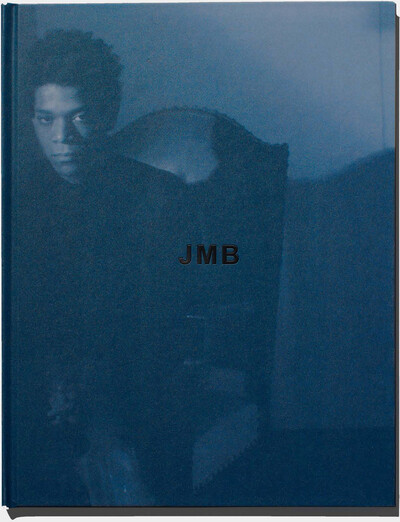
May 1 2023: A Shaded View: Basquiat – JMB Limited edition by Jeannette Montgomery Barron published by NJG Studio
Dear Shaded Viewers,
I had the great pleasure of meeting Jeannette Montgomery Barron a few years ago in Paris at Outsider Art at the James Barron Art exhibition. We met through Paul and Renee Riccardo Laster, my neighbours when I lived in the West Village in NYC in the 80’s. I am also the very proud owner of CINDY SHERMAN Contact, also published by NJG Studio. That edition is a work of art and even though I have yet to see the limited edition of JMB, I have no doubt it too is a treasure.

April 29 2023: Financial Times, How To Spend It: JMB in Opening Shot
TENDER IN THE NIGHT In December 1984, photographer Jeannette Montgomery Barron travelled to Jean-Michel Basquiat’s studio on Great Jones Street, carrying only her camera, a light and three rolls of film. Her set-up was simple: a plain wall, some of his paintings, the shadow cast by a birdcage he kept in his studio. One sitting led to another, this time at The Factory with his friend Andy Warhol. Both sittings, from 1984 and 1985, are brought together for the first time in a new book, alongside an essay by Italian artist Francesco Clemente. In contrast to the myriad posed and highly stylised photographs of the pair, Barron’s naturalistic images capture a more subtle dynamic: a shared sense of melancholy, a gentle and tender friendship. The secret to her success, writes Clemente, was that she didn’t treat her subjects like celebrity artists but rather “as poets, emerging timidly from darkness to the realness and fragility of body and soul”. BAYA SIMONS

April 29 2023: Fucking Young: JMB
Published for the first time, JMB brings together the complete sittings from 1984 and 1985, including six contact sheets with 24 large format images and an unseen artwork by Basquiat. The book provides a candid commentary on Basquiat’s curious world at the height of his success. This collection is part of a remarkable compendium of portraits shot by Jeannette of renowned personalities from the most exciting era of New York City underground culture—the 1980s—where the young and indomitable gathered downtown in search of places to work and live among like-minded collaborators, such as musicians, filmmakers, painters, writers, fashion designers, publishers, actors, models, and photographers who played together, worked together, made their own rules, and changed our culture forever.
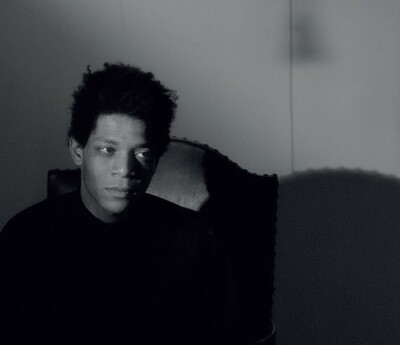
April 29 2023: Grazia: JMB

April 29 2023: Re-Edition: JMB (Jean-Michel Basquiat) by Jeannette Montgomery Barron
Confirmed Book Signings
Saturday, June 3, 2023, 6-8 pm, House of Books, Kent, CT
Thursday, June 8, 2023, 6-8 pm, Chez Dede, Rome
Thursday, June 29, 2023, 5-7 pm, Troutbeck, Amenia, NY
Thursday, July 6, 2023, 6-8 pm, Patrick Parrish Gallery, NYC

April 29 2023: Flaunt: Through the Lens of Jeannette Montgomery Barron
In December of 1984, Bruno Bischofberger extended an invitation to accomplished photographer Jeannette Montgomery Barron to photograph Jean-Michel Basquiat at his Great Jones Street Studio in New York City. This initial meeting was the first of two sessions. With minimal props consisting only of a birdcage, chair, and unfinished painting, Jeannette captured thirty-six images on three rolls of 120 film–using her signature black and white layering of light and shadow.

April 28 2023: Vanity Teen: JMB: An Exclusive Glimpse Into Basquiat’s World Through the Lens of Jeannette Montgomery Barron
Step into the captivating world of 1980s New York City with JMB, an exclusive limited edition book that showcases never-before-seen photographs of iconic artists Jean-Michel Basquiat and Andy Warhol. Brought to life by celebrated photographer Jeannette Montgomery Barron and featuring a heartfelt essay by Francesco Clemente, this 64-page collector’s edition is a must-have for art enthusiasts, fashion lovers, and anyone who appreciates the transformative power of underground culture.

April 28 2023: WWD: A Portrait of the Artists: Jean-Michel Basquiat and Andy Warhol
“It was early evening, in the winter, so it was dark already. And I was the only one there — no one else was in the studio. I’m pretty minimal, too. I don’t bring a lot of equipment, or work with assistants. I feel that just messes up my correspondence with the subject. I want to be the only one” interacting with them, she said.
Basquiat, whose star was still on the rise, “was really sweet and very accommodating. I don’t think we talked much at all. He liked the images, and so did Bruno,” she said.

December 8 2022: A MARFA Christmas with John Waters
Dreamlanders, friends old and new, all gather to appear in this MARFICTIONAL story – actors, behind-the-scenes collaborators and others who have worked with John Waters over the years. And though the book reads as if everyone was together on one night, the fact is, like the best gifts, it took a long time to wrap this up. Each interview is housed within a dreamt-up narrative set at one of John’s annual Christmas parties.This particular event may not be real, but the dialogue is all true to life. No words are falsified in this world, but everything else is untrue.
Produced by MARFOFFICE, with curation, design and production by Alexandra Gordienko, Julia Monsell and Jodie Hill, and words by Ross Aston. A MARFA Christmas with John Waters contains shoots and interviews, ephemera, one-off letters and rare archive imagery, accompanied by a short film by Clara Cullen.
Featuring Mink Stole, Kathleen Turner, Max Farago, Traci Lords, Johnny Knoxville, Ricki Lake, Senta Simond, Jeannette Montgomery Barron, Alasdair McLellan, Pat Moran, Jess Cole, Sophie Buhai, Ethan James Green, Ricky Saiz and many others on Santa’s naughty list.

November 6 2022: Ever Anderson by JMB on cover of RE-EDITION AW2022
"Brace yourself, Re-Edition Autumn/Winter 2022 is here. Now at its 18th issue, the captivating title active at the intersection of art, fashion, and photography continues to push the boundaries of creative imagination, empowering the most thought-provoking personalities on the international cultural scene. (...) In yet another cinematic editorial, young actress Ever Anderson, daughter of supermodel and actress Milla Jovovich and constant MiuMiu inspiration, is captured by American portrait photographer Jeanette Montgomery Barron."

September 20 2021: A Shaded View on Fashion: Cindy Sherman-CONTACT by Jeanette Montgomery Barron
Thanks to Diane Pernet at A Shaded View on Fashion for featuring my new book Cindy Sherman — Contact this week. Pernet writes:
"Dear Shaded Viewers,
I met Jeanette Montgomery Barron in Paris a few years ago at the Outsider Exhibition. Montgomery-Barron is well known for her black and white portraits and has documented the ’80’s in New York. Her first portrait was of Francesco Clemente, followed by Andy Warhol, Keith Haring, Jean-Michel Basquiat. She captured all of the icons of the 80’s: Cindy Sherman, the subject of her most recent book: Contact-Cindy Sherman, William Burroughs, David Salle, Jenny Holzer, Julian Schnabel, Barbara Kruger, Robert Mapplethorpe, Kathryn Bigelow…
CONTACT contains 40 portraits of Cindy Sherman and 4 contact sheets shot October 31st, Halloween in Cindy Sherman’s studio, New York City. For the first time we see Cindy Sherman as …Cindy Sherman."
August 15 2021: Press for Cindy Sherman — Contact

Thanks to Emily Dinsdale for highlighting my new book Cindy Sherman — Contact in her article "Do these portraits reveal the real Cindy Sherman?" at Dazed Magazine.
"Like all images of Sherman, these portraits also raise fascinating questions about our ‘true’ selves and the scope of photography to depict reality. Barron herself is none the wiser. 'I really don't know who the ‘real’ Cindy Sherman is,' she says. 'I wish I did.'"
Read the full article here

Ayla Angelos intervied me about my new book Cindy Sherman — Contact and my experiencing photographing Sherman for Port Magazine.
"The visual tome [CONTACT] presents a different side of Sherman, as seen through the eye of Barron who’s known for capturing portraits of many notable names from New York City during the 80s."

Miss Rosen at AnOther Magazine also featured Cindy Sherman — Contact in "Intimate Photos of Cindy Sherman Like You’ve Never Seen Her Before."
"From Andy Warhol, Jean-Michel Basquiat and Keith Haring, to Robert Mapplethorpe, Jenny Holzer and William S Burroughs, Barron crafted a quiet, meditative series of personalities that usually presented as larger than life – perhaps none so conscientiously as Cindy Sherman."

Cindy Sherman — Contact was named one of the "10 Coolest Things this Week" by British GQ and one of Marie Claire's "Best things to buy, browse, and book."
"Comprised of 40 photographs all shot on Halloween 1985 in Sherman’s studio, New York, [Cindy Sherman – Contact] is part of a remarkable compendium of portraits shot by Barron of renowned personalities from arguably the most exciting era of NYC underground culture, when the young and indomitable flocked downtown in search of places to work and live among like-minded collaborators."

June 4 2021: A View of One's Own
November 14 2020: Behind the Book: Roman Hours
Ivorypress explores the design process behind Roman Hours with their in-house graphic designer Joana Bravo. Jeannette Montgomery Barron and André Aciman's collaborative book Roman Hours was published by Ivorypress in October.
More information about Roman Hours
July 22 2020: Table Tops at James Barron Art
Jeannette Montgomery Barron: Table Tops
Opens July 22, 2020
The Cabin at James Barron Art
James Barron Art is proud to present a selection of photographs from Jeannette Montgomery Barron's Tabletops series. This is the first time works from this series have been exhibited, and it is our inaugural show at the Cabin, a newly restored structure built thirty years ago.
These photographs invoke our collective memories of lively meals shared with friends, as well as the unique Italian sentiment that a meal does not need to be fancy or expensive to be a celebration. Viewed through the lens of our current pandemic, these works feel especially nostalgic and comforting.
Please contact info@jamesbarronart.com for more information.
April 15 2020: The Guardian: From Warhol to Basquiat: behind a revealing set of artist portraits

February 17 2019: Hudson Review reviews Mirrors and Glass
At the Galleries
by Karen Wilkin
At James Barron Art, in Kent, Connecticut, the beautifully installed “Jeannette Montgomery Barron/Laura de Santillana: Mirrors and Glass” paired works by an American photographer and an Italian sculptor. Montgomery Barron’s minimalist images of smallish round or oval mirrors, poised on slender bases, ranged from soft silver gelatin prints to crisp, lushly-hued pigment prints. Rather than reading as austere still lifes, the photographs of these anonymous, everyday objects become “portraits,” heads on slim necks, sometimes confronting us, sometimes turning away. They seem introspective, self-contained, as if Montgomery Barron had captured her sitters unawares. That mood was intensified by the proximity of de Santillana’s subtle, reticent sculptures: blunt, compressed rectangles of hand-blown glass enclosing stacked blocks of color. The vaguely head-like proportions of these elegant objects reverberated with Montgomery Barron’s “mirror portraits,” but the trapped, translucent hues within the rectangles also had associations with the larger world—with the sky, water, and light of Venice, where de Santillana lives and works, for example. Seen frontally, her glass pieces seemed connected to abstract painting—perhaps Rothko, scaled down and luminous—but from an oblique view, where the thickness of the enveloping clear glass became visible, these seductive objects were at once declaratively about their material presence and evanescent.
The two very different bodies of work entered into a fascinating conversation. De Santillana’s pieces underscored the physical properties of Montgomery Barron’s subjects in new ways, reminding us of the “glassiness” of mirrors, while the understated geometry of the photographs—the nuanced relationship of ovals and circles to the rectangles or squares of the field—made us consider freshly the shape and proportions of the sculptures’ color blocks. That color was ravishing, but among the most memorable pairings in the show was a group of de Santillana’s sculptures celebrating the power of transparency and silvery greys, with a selection of Montgomery Barron’s ephemeral silver gelatin prints. Who ever thought that color had to be chromatic to be expressive?
September 8 2018: Mirrors and Glass at James Barron Art
Opening Saturday, September 8, 2018: Mirrors and Glass at James Barron Art
Jeannette Montgomery Barron and Laura de Santillana
Opening Reception: Saturday, September 8, 2018 from 4 - 6 pm
Our exhibition examines the remarkable visual parallels between Jeannette Montgomery Barron's photographs of mirrors and Laura de Santillana's glass sculptures. These two artists were born one year apart - Laura de Santillana in Venice, Italy, and Jeannette Montgomery Barron in Atlanta, Georgia - and both have worked continually between the U.S. and Italy. Without knowing one another's work until very recently, the two artists have steadily developed a minimalist aesthetic and an exploration of color through repetition of form. This is the first time their work has been exhibited together.
Jeannette Montgomery Barron's works are in numerous public and corporate collections, including The Museum of Modern Art, New York; The Whitney Museum of American Art, New York; The Museum of Fine Arts, Houston; The High Museum of Art, Atlanta; Kunsthaus, Zurich; Collezione Maramotti, Reggio Emilia, Italy; The Archivio Fotografico, American Academy in Rome and The Andy Warhol Museum, Pittsburgh.
Laura de Santillana's works are in numerous public collections, including The Metropolitan Museum of Art, New York; Los Angeles County Museum of Art, Los Angeles; The Museum of Fine Arts, Boston; The Museum of Fine Arts, Houston; the Murano Glass Museum, Venice; The Corning Museum of Glass, New York; Cooper-Hewitt Museum, New York; Seattle Art Museum, Seattle; Carnegie Museum of Art, Pittsburgh and Museum of Art and Design, New York.

May 21 2018: LADY TV feature
For the past few years we have been joining photographer Jeannette Montgomery Barron regularly, for dinners and lunches, in her adopted home of Italy, via a beautiful series of images she has slowly compiled and posted teasingly on Instagram. That we are thousands of miles away and have not so much as shared a bite makes no difference. These are not foodie pics. While these are meals attended by Barron, we do not see any food and are not given any clues to the whereabouts of these establishments. Yet we can hear everything in these photographs. The almost inconsequential “Let's eat out”, quickly followed by reaching for the house keys, no changing—maybe just wrapping a scarf around your throat—then walking around the corner and in to the familiarity of the place where you are known and simply, deliciously fed.
These photos capture a range of restaurants, mostly Roman. From plastic plaid tablecloths to smooth, reassuring white linens, we wonder what that meal was like and with whom did she dine. Tables are laid with clues, from perfect pre-meal symmetry, to the sensual mess of tables loitered at; others, neatly ravaged with emptied espresso cups, stubbed cigarette butts, and what we can only imagine are the dredges of a great conversation left behind.
These images have been nagging us. They deceptively simple, but they provoke and attract us. What is it? Have we missed something?
We finally realize, yes, we have missed something. In the hyperbolic explosion of food culture, absurdist real estate dramas, and the ubiquitous tonnage of "branding", we have in America mislaid the ultimate comfort of the neighborhood spot. With her elemental, reserved images, Barron has broken our hearts as we long for all the iterations of these we lost in the US. These are the places you and your team eat at several times a week. Usually the same meal, or a variation on one, or one requested and prepared by the chef for a regular. The place you have a few preferred tables, you know the waitstaff by name. Where the proprietor is a friend by virtue of having had so many small pleasant conversations in passing, where the details of one another's lives slowly are revealed after so many visits. You know their kids, grandparents, and vacation schedules. The food is lovely, but one initially is going for convienence, which gives way to dependablity and reassurance. This meal out is the solution to a busy day that does not represent a luxury. It is rather a community and a comfort.
In these images we are also reminded of the value of the ritual of the shared meal. At these tables, our lives are shaped, with conversations supported by bowls of steaming pasta, a particularly tasty salad, a glass of house red. No prep, no dishes to distract us. Perhaps we also feel nostalgia for a time when the end of the day meant reuniting with one’s people, to recap the day, a system quite obsolete now that we text, DM and WhatsApp our way from waking to sleeping. Maybe it is also a mirage, of urban middle class life that Italy has managed to preserve, mostly expunged from our Americans cities. It seems exotic now, doesn’t it? At Jeannette's brilliant suggestion, we have asked her friend, the writer Chiara Barzini to populate the photos of her choosing with small scraps of fictional lives, as if overheard at a neighboring table. http://ladyworld.tv

September 12 2017: Cindy Sherman by JMB on cover of Purple Magazine
25 covers for the 25 anniversary of Purple Magazine. Cindy Sherman photographed by Jeannette Montgomery Barron.
"For our 25th anniversary issue, Purple celebrates the artists and models who incarnated the spirit of the magazine through their style, attitude, and personality: Cindy Sherman, Richard Prince, Paul McCarthy, Michèle Lamy, Susan Cianciolo… Stella and Eva… Amanda Wall, Maurizio Cattelan, Paul Hameline… and more."
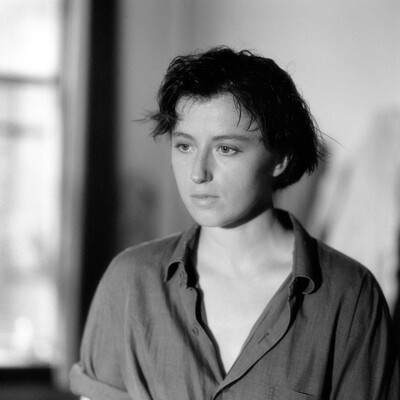
December 6 2016: EXIBART review of Mirrors, Magazzino Rome
http://www.exibart.com/notizia.asp?IDCategoria=1&IDNotizia=51655

November 28 2016: OBSERVER REVIEWS A VIEW OF ONE'S OWN

November 2 2016: JMB participates in SURFACE MAGAZINE collaboration with Jenny Holzer

July 22 2016: Musée Magazine
Musée Magazine issue 15 features JMB photos with André Aciman essay, "ROME IS."
Read more at museemagazine.com

May 1 2016: JMB featured in UPSTATE DIARY
Upstate Diary is about the creative possibilities that thrive in communities outside of city limits. The ways that natural beauty and the challenges of rural life inform and influence the creative process form common themes among most of the artists we feature. Upstate in this context is truly about a state of mind.
We hope that you will learn something new, become inspired by these stories and be inspired to explore.
Upstate Diary is the brainchild of Swedish Photographer and Director Kate Orne, formally an editor at Interview Magazine.
